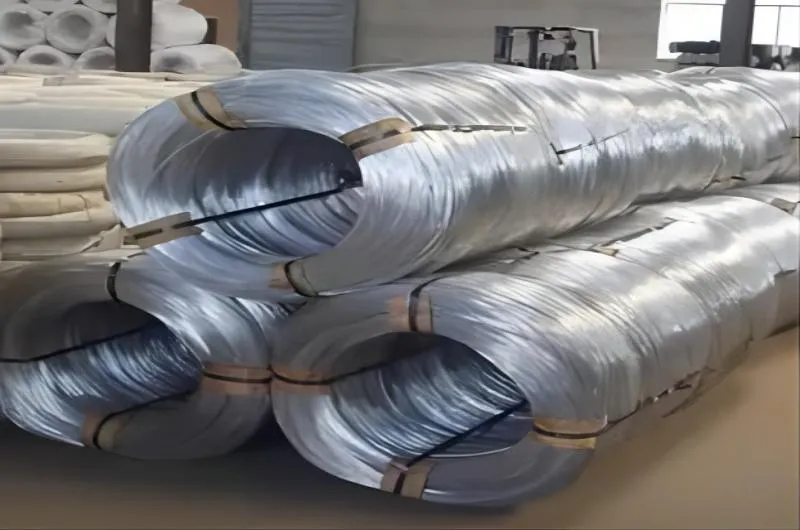BY  GENN
GENN
2024/03
Blog
What Is The Difference Between Steelmaking Cored Wire And Pure Calcium Wire?
What Is Pure Calcium Cored Wire?
A specialised metallurgical product used in the production of steel is pure calcium-cored wire. It is mostly used as a deoxidizer in the steel industry, where it is essential in lowering clogging of the nozzle and preventing the development of sulphide inclusions in steel. The primary raw ingredients used to create the wire core of pure calcium-cored wire are silicon and barium powders, which are combined in a certain ratio. For Pure calcium-cored wire to be applied effectively in steelmaking operations, specialised wire-feeding equipment must be used.
Accurate measurement and uniform density are ensured by the intimate integration of the wire with an exterior steel jacket. By preventing calcium oxidation, this integration helps to extend the wire’s shelf life by three to five years. The outside steel jacket usually has a thickness of 1-2 mm, and the wire has a standard diameter.
It is noteworthy that the utilisation of pure calcium-cored wire is essential during the last stages of steelmaking since too much oxygen in the steel might result in the formation of oxides and impurities, which can have a substantial effect on the steel’s quality. To preserve the appropriate steel quality, pure calcium-cored wire must be added as a deoxidizer.
The absorption rate must be carefully considered when using pure calcium-cored wire since it plays a significant role in lowering production costs. Concerning the absorption rate, manufacturers must make sure that pure calcium-cored wire is effectively used in the casting and steelmaking processes.
During the 1970s, foreign steel factories treated molten steel with solid pure calcium core wire (metallic calcium solid core cored wire). It has been in widespread usage around the world, particularly since thin plate continuous casting technology began to emerge and grow quickly in the 1990s. Most renowned steel mills are aware of the benefits of solid, pure calcium core wire. As of right now, solid pure calcium core wire holds a market share of over 70% in North America and 40% in Europe. Numerous steel mills in my nation have imported solid, pure calcium core wire in recent years, with positive social and economic outcomes.
What Is Steelmaking Cored Wire?
A specific metallurgical product utilized in the steelmaking process is steelmaking cored wire. It is intended to add different substances to molten metal in order to refine and alter the steel’s characteristics. Calcium, silicon, and other alloys can be precisely added to the steel melt thanks to the cored wire technology.
In the process of manufacturing steel, the alloy core wire helps to refine steel impurities, enhances molten steel’s castability, and greatly boosts ferroalloy yield. This method offers major financial advantages, lowers the cost of producing steel, and helps reduce the use of alloys. Core wire coils are generally classified into two categories: inner tap and outer tap. Core wire technology includes both the manufacturing and application aspects. While the outer tapped reel is set on the payout device’s turntable and receives the core wire feed through the wire feeder and conduit, the inner tapped coil enables the core wire to be added directly into the ladle through a wire feeding mechanism and conduit device.
Cored wires are produced in a range of diameters; the most popular sizes range from 0.8 mm to 1.6 mm. The variety of weld metal grades is extensive and ever-expanding and cored filler wires for use with stainless steel are becoming more and more accessible.
Modern steelmaking feeding wire technology makes extensive use of core-spinning technology, a refining technique that was invented recently and is utilised to produce cored wire. Various kinds of core wires can be made based on the needs of the user, including pure calcium wire, silicon manganese calcium wire, aluminium calcium wire, and silicon calcium core wire.
What Is The Difference Between Steelmaking Cored Wire And Pure Calcium Wire?
The primary distinction between pure calcium wire and steelmaking cored wire is found in their respective uses and compositions.
- Production of steel Steelmaking cored wire is a specialised product used in the steelmaking process to introduce different elements into molten metal. It is intended to refine and alter the steel’s characteristics, such as enhancing the molten steel’s castability and cleaning steel impurities.
Steelmaking cored wire comes in a variety of compositions, and it’s frequently used to add elements like silicon, calcium, and other alloys to the steel melt in order to accomplish particular metallurgical goals.
In order to improve the yield of alloy, lower smelting costs, and improve the quality of the molten steel, steelmaking cored wire is essential for regulating and controlling the concentration of oxidised components in the steel.
- Pure Calcium Cored Wire: This particular kind of cored wire is utilised in the steel industry, mostly for inclusion modification, desulfurization, and deoxidation of the steel. It is a physical mixture of iron and calcium metal grains in the appropriate proportion.
It has been demonstrated that using pure calcium-cored wire in the steelmaking process can significantly increase the molten steel’s purity and allow for the creation of steel grades that are of a higher calibre.
The primary components of pure calcium-cored wire are proportionately blended silicon and barium powders for the wire core. Lowering the production costs can be achieved by increasing the rate at which pure calcium cored wire absorbs calcium.










